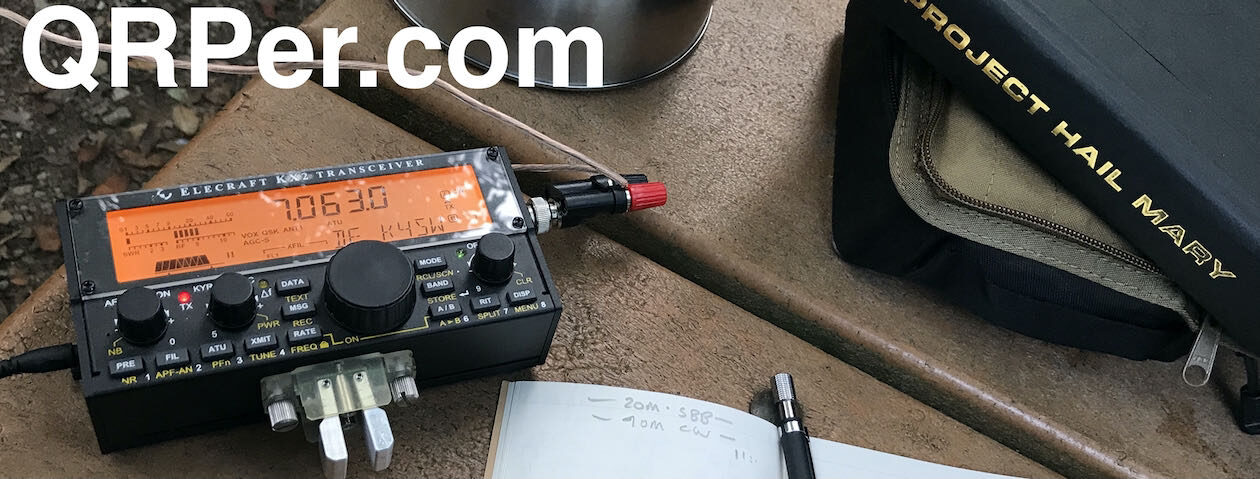Sunrise Activation in the Windy City
by Tim (W8TMI)
I was recently traveling for work to Chicago, IL. I wouldn’t think of a big city as the first place for one of my radios to go, but the KH1 doesn’t take up much room and it’s a new toy I’ve been wanting to play with. I took a train from my home in Michigan to Union Station in Chicago where I was staying downtown. Taking a look at the POTA map there aren’t many opportunities to activate a park.

I don’t always sleep well away from home and Illinois is one hour behind Michigan. I woke around 5:30 AM local time which fits my normal routine. I was wide awake and I didn’t have any appointments until much later in the morning. Time to take a look at the local train system.

I found the METRA Electric Line that ran from Millennium Station downtown to well past the stop I was looking for, 111th St Pullman.This stop brought me to a former factory that built train cars from 1881-1968 and was turned into a national monument. Pullman National Monument (US-7917) which is owned and operated by the National Parks Service.
Finding this route I suited up, packed my bag, and headed out into the early morning dark. I was aiming to make Millennium Station by 6:35 and it was about a mile from my hotel. The sun wasn’t providing much light once I ventured out and the temp was around 23° F°/-5° C°. I stopped a few times to snap some quick pics while trying to make it to the station on time. The color from the sunrise appears much better in the pictures than to the naked eye.

I made it to the station by 6:25. Plenty of time to buy my ticket and make it to the train. The 6:35 train would make it to 111th St around 7:04 depending on how late it ran. My plan was to make the 8:24 return train giving me an hour and twenty minutes to operate and secure the activation. There was an earlier departure from 111th at 7:34, but that seemed ambitious. If I made a later train at 9:36 I would be delayed an additional 30 minutes due to construction on the line. 7:04-8:24 sounded like plenty of time to activate the park.

Given the time in the morning I decided to give the AXE a try on 40m. My KH1 field kit contains a 20’ counterpoise extender of 26 awg silicone wire to add to the 13’ standard counterpoise that I use for 15m-20m. Deployment took under a minute and I was able to find a frequency and lock my VFO in so I don’t bump it while operating pedestrian mobile.

I had the activation scheduled and began calling CQ. I noticed the RBN picked my station up almost immediately based on the POTA spotting page. My PoLo app (Portable Logger) was set up and ready to copy. I do a hybrid method of logging, I copy callsigns via the paper sheets in the logging tray and then enter them with my free hand into the app. This keeps the time sync easier when going to upload the log.
According to the app my first contact was in the log at 7:14 and the final (13th) was logged at 7:31. I had walked into the park 23 minutes prior and had 13 contacts after setting up my station. This also meant that I didn’t need to wait for the 8:24 train, the 7:34 train should work. I packed my gear up and dashed to the station. Thankfully trains have a tendency to run a little later than scheduled and I was easily able to make it. Back to the hotel where a hot breakfast waited.
 I don’t believe this activation would have been possible if it weren’t for the KH1. Which is exactly why I have it. Easy to always have on me and bring pretty much anywhere. The deployment speed coupled with the activation speed is unmatched in my experience. The radio is a premium niche product that I am glad I don’t have to live without. I’m looking forward to many more activations with it.
I don’t believe this activation would have been possible if it weren’t for the KH1. Which is exactly why I have it. Easy to always have on me and bring pretty much anywhere. The deployment speed coupled with the activation speed is unmatched in my experience. The radio is a premium niche product that I am glad I don’t have to live without. I’m looking forward to many more activations with it.
Here are a few other photos from the trip down south.










